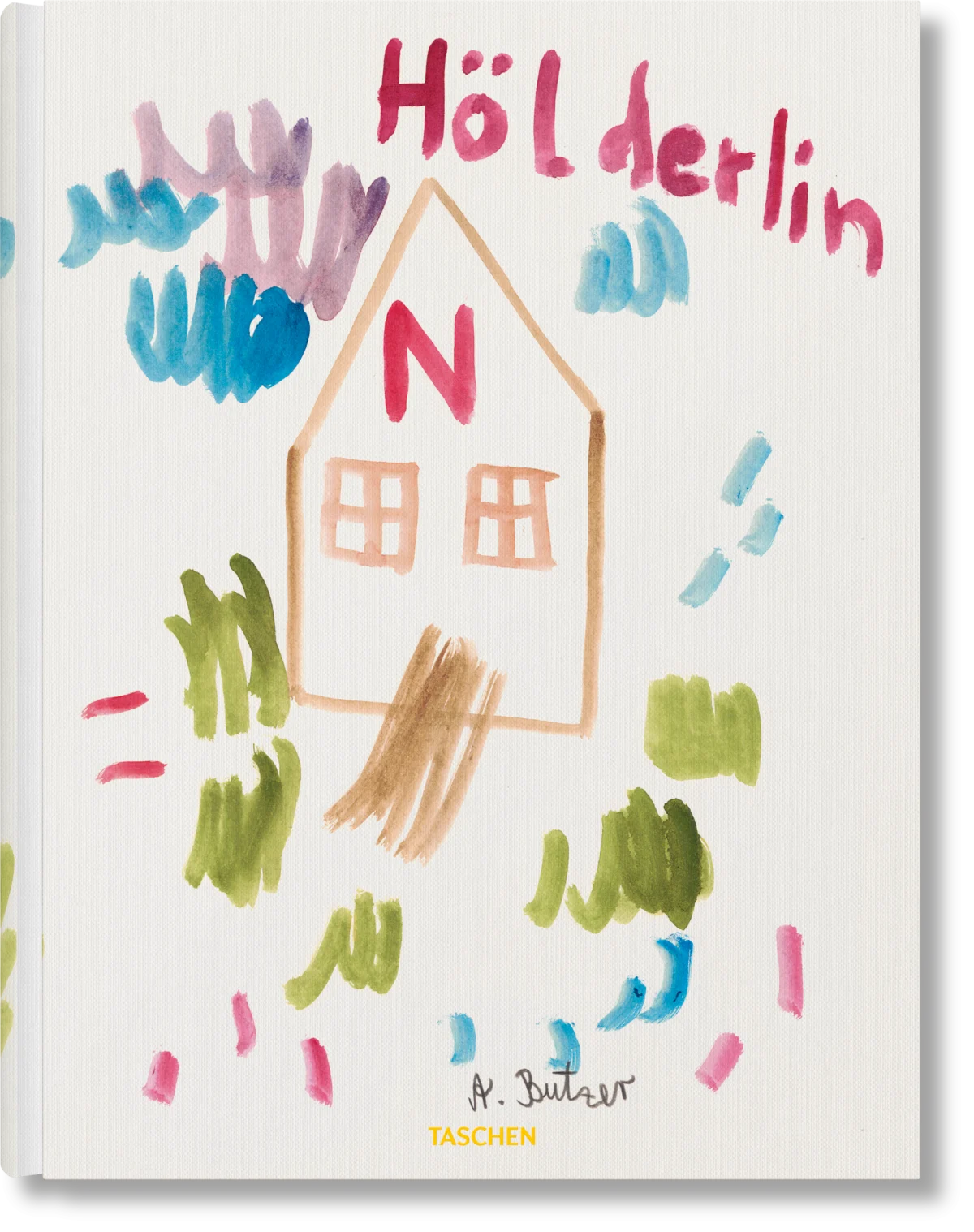Friedrich Hölderlin is probably André Butzer’s favorite poet and ranks alongside Walt Disney and Henri Matisse among his “favorite people ever.” His identification with the poet goes even further, as Hölderlin’s day of death is Butzer’s own birthday.
As Butzer moved to Los Angeles, the land of his youthful dreams, for the first time in 2001, he got homesick. The home he longed for lay neither in the old world nor in the new. In California, he read Hölderlin’s Hyperion and was shaken: “As I read, I felt that I understood every word. I thought these words came from me.”
Butzer recognizes himself in Hölderlin’s fateful protagonist and invents the figure of the homeless Wanderer. His home is in painting, and so he sets off down “Hyperion Ave”—the street on which The Walt Disney Studio opened in 1926. According to Butzer, “Hölderlin, just like Disney, expresses longings. And these can be put to use.”
For Hölderlin, poetry is the place that makes human existence on earth possible. For Butzer, it is painting. In poetry, he finds succor to settle and reconcile the extreme contradictions of the world through his painting.
In this artist’s book, Butzer has compiled 47 poems written by Hölderlin between 1793 and 1843 on the four seasons. These poems link the cycle of the seasons with man’s path of life like a parable: the autumnal fulfillment of summer’s maturation, the blossoming of life in spring and the experienced barrenness of winter.
The poems may sound simple, but in them Hölderlin gives shape to human endurance in seemingly hopeless conditions: hope, doubt, wonder, longing, love. Matters of the heart, simple, lucid and vulnerable.
Just take Hölderlin’s beloved Diotima. In Untitled (Diotima), she gazes towards a place hidden from our view. Is she looking into her innermost self or into the inaccessible distance? Seeing her see, we recognize ourselves in her gaze.
To accompany the poems, Butzer has created 40 watercolors. His iconic characters—the Wanderer, the Woman, the Peace-Siemens—cyclically fade and reappear in the delicate colors. Each figure, each thing, each stroke, each patch and each hue of color carries itself. Yet time and again, a fragile harmony emerges from their contrary bonding.
The book does neither adhere to the chronological everyday time nor the ‘factual’ succession of the seasons. Instead, Butzer has placed the poems and watercolors intuitively, forming open constellations. This corresponds to Hölderlin’s wackily fantastic dating, in which a poem from 1843, for instance, can be attributed to 1758, 1648 or 1940. In the persistent poetic time, the past and the future are one complete whole.
In unison words and images ponder man’s dwelling upon this earth, in the humblest and most poetic way.


